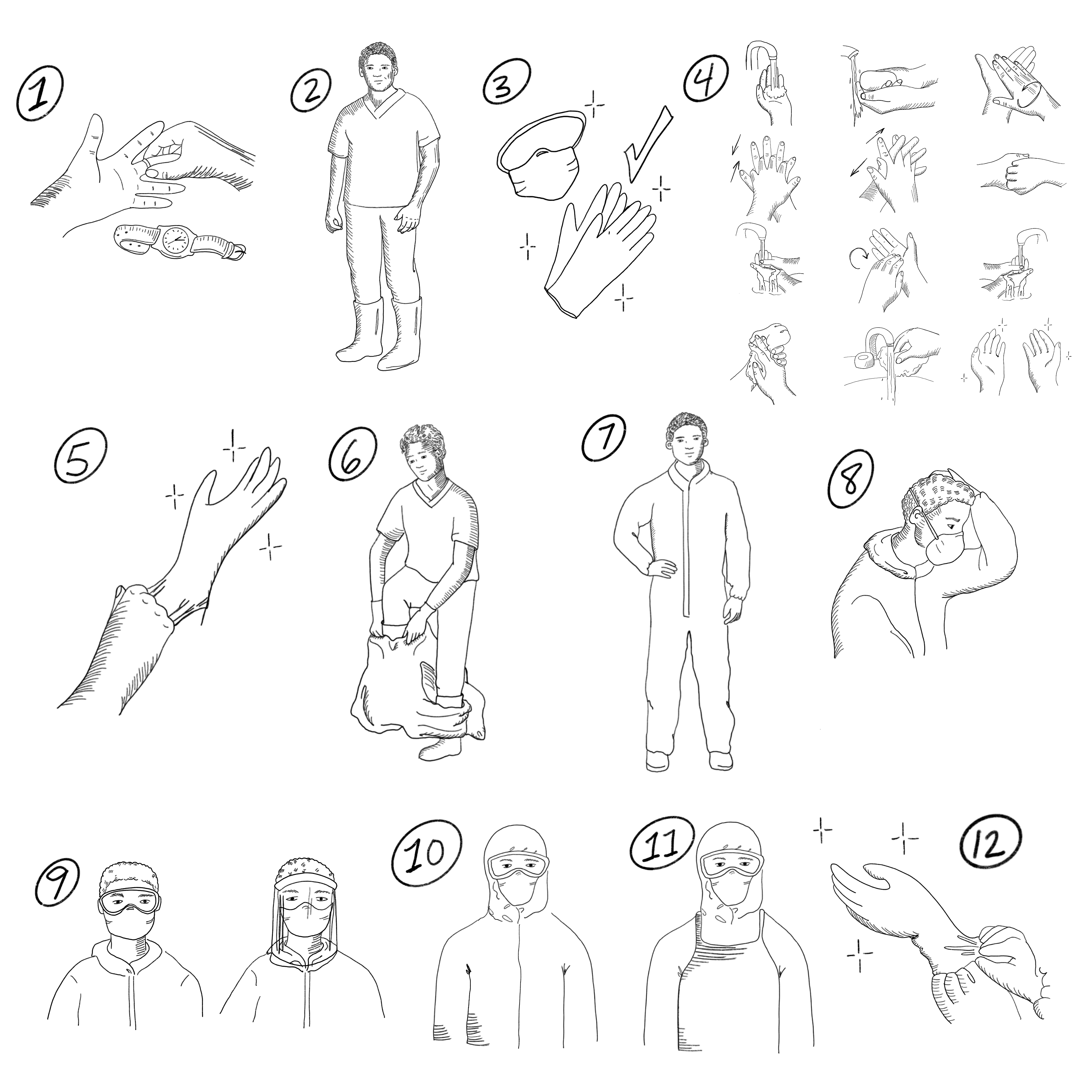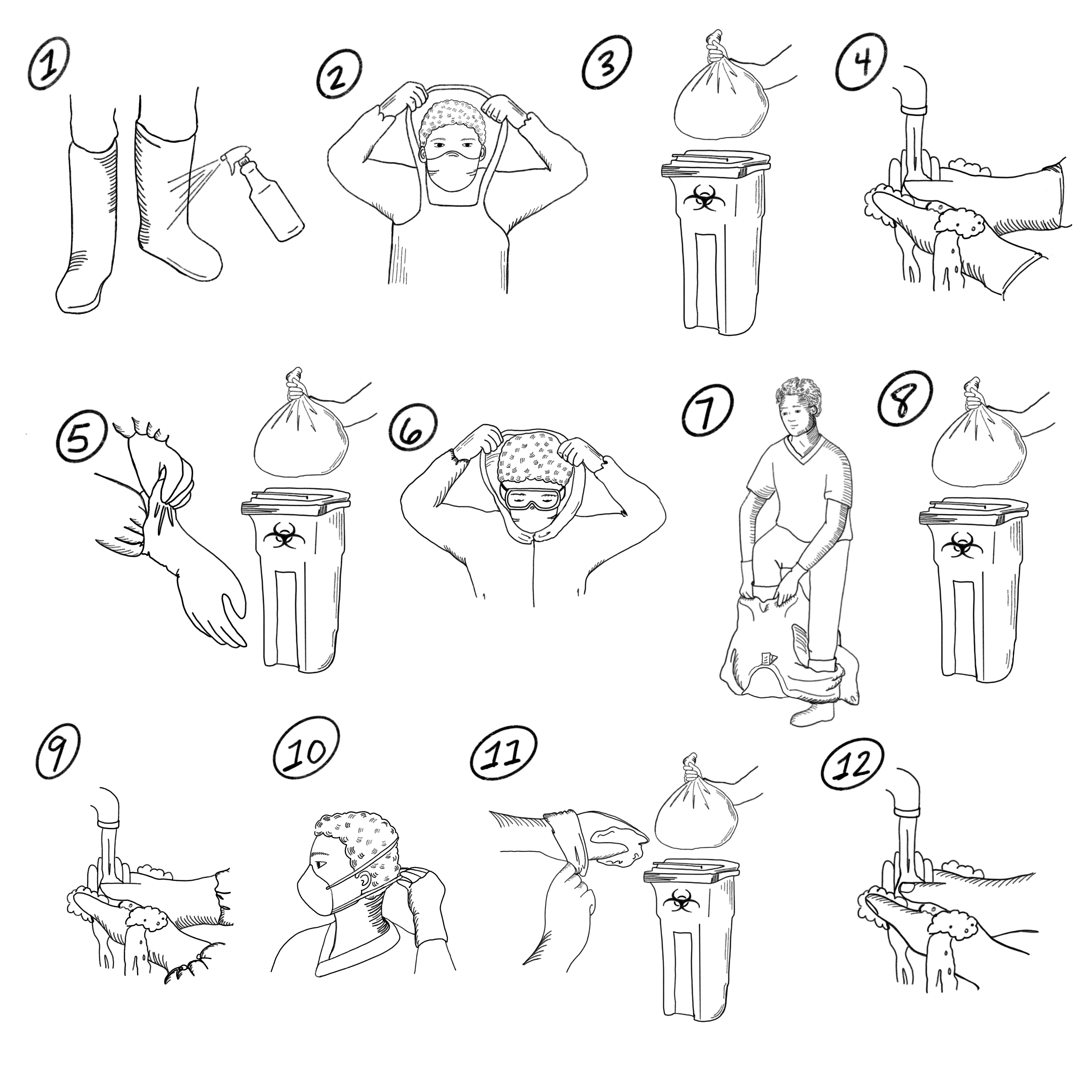06. Personal protection equipment (PPE) for highly infectious diseases
Overview
When working with certain epidemic diseases, especially highly infectious diseases such as Ebola, Marburg, Lassa fever and plague, it is vital to protect yourself when you touch affected people, their body fluids, or dead bodies or animals.
Like volunteers, PPE comes in different sizes and fits. Not every size of PPE will fit every volunteer appropriately (e.g. protective googles may not be the right size or shape for some women or for people of certain ethnicities, leaving them at greater risk of exposure). It is very important that volunteers have the correct size and fit of all their equipment for optimum protection.
This tool shows you how to put on and take off PPE. ** Note: Different PPE types are used in different contexts, depending on the disease and the type of protection required (e.g. the components of the PPE for Ebola and for plague may have some commonalities but are not the same). Always ensure that you have been properly trained to use the type of PPE available in your context, for the specific disease you are addressing. **
See Action tool Volunteer protection and safety for more information on volunteer protection.
What to do and how to do it
- Test the size and fit of your PPE by having your manager check the fit and coverage of all your equipment. If anything is incorrectly sized, be sure you obtain equipment of the correct fit before you begin work that puts you at risk of exposure.
Steps for putting on protective clothing

Steps for taking off protective clothing

Note: Handwashing, with gloved hands, should be performed before starting to remove protective clothing (step 4), between removing protective clothing but before removing protective face mask (step 9) and at the end with ungloved hands (step 12).